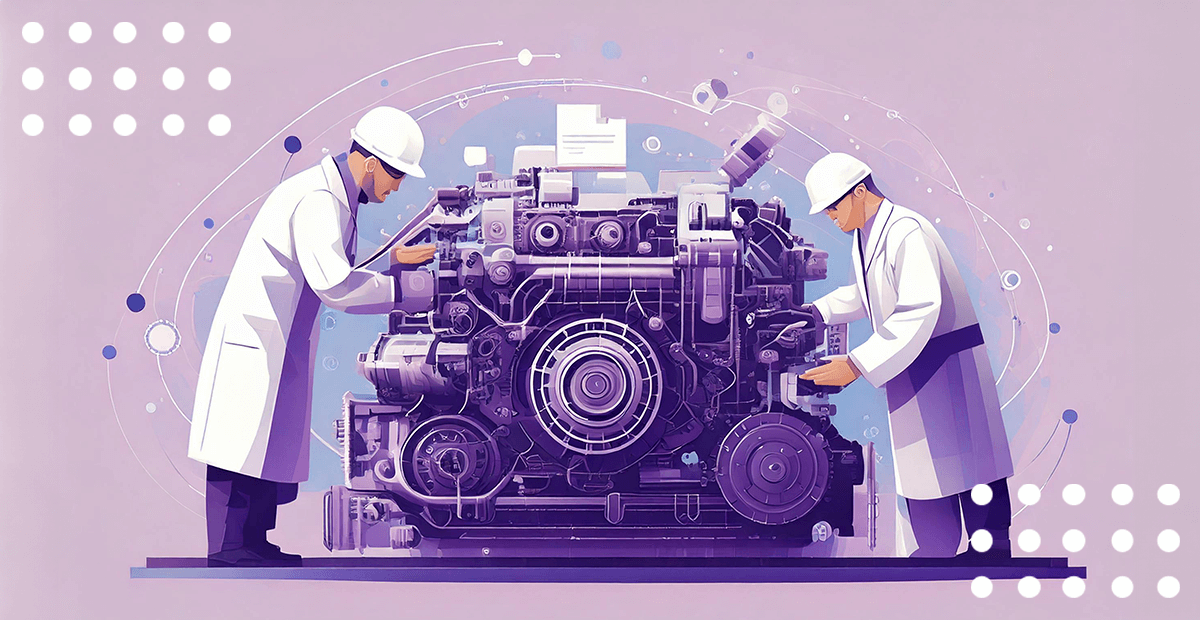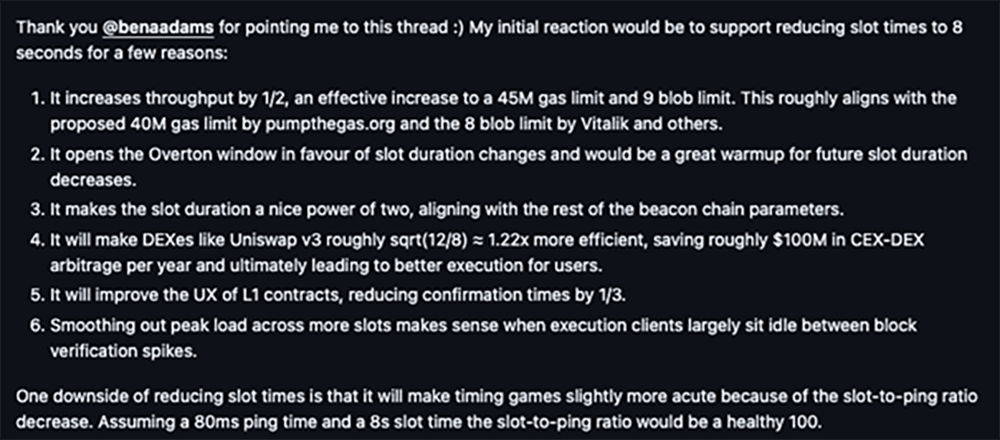EIP-7781: New Effort to Increase Ethereum's Throughput



EIP-7781 addresses the issue of 12-second block times, blob capacity, and the efficiency of smart contracts, particularly in DeFi. The aim is to increase the chain’s throughput by 50%. Learn about the advantages and potential risks of this brand-new October 2024 Ethereum Improvement Proposal.
It was presented to the community by Ben Adams, co-founder of Illyriad Games Ltd., which curiously operates a strategic MMO of the same name, launched in 2010. The main change the proposal is putting on the table is reducing block times from 12 to 8 seconds. This would be the fourth time the blockchain has undergone a similar change, the last one being during The Merge in 2022.
[.c-wr-center][.button-black]Start Now[.button-black][.c-wr-center]
Although significant effort has been made, Ethereum Layer 1 still faces congestion and suboptimal gas fees. Shortening block times could also benefit decentralized exchanges like Uniswap, improving their efficiency by 22% and potentially saving up to $100 million annually in arbitrage costs between DEXes and centralized exchanges.
Apart from the abovementioned block times, some additional changes are proposed. One of them is increasing the latency of base rollups and the capacity of so-called blobs, a short-term data structure aimed at reducing layer-2 network fees. Essentially, the mission is to better allocate the mainnet’s bandwidth, as Ethereum Foundation employee Justin Drake points out in his remarks below.


[.c-box-wrapper][.c-box]You might be interested in: Axelar Network and AXL Token: What They Are and Beyond[.c-box][.c-box-wrapper]
The term “Blockchain Trilemma,” coined by Ethereum co-founder Vitalik Buterin, signifies the challenge that increasing scalability often means sacrificing other important aspects, such as decentralization or security. In the case of EIP-7781, the most profound risk is the centralization of the network into the hands of organizations with the most powerful hardware. As a result of shorter block times, there will be an increased barrier of entry for new small stakers, who are crucial for decentralization. This could change the landscape of the network, creating a new challenge.
The future of EIP-7781 is uncertain, as Vitalik Buterin is currently focused on decentralizing the network by suggesting lower staking collateral, reducing the threshold from 36 ETH to just 24 or 16 ETH. The combination of lowered staking requirements and this proposal seems like the most probable scenario.
[.c-box-wrapper][.c-box]You might be interested in: Fact or Myth: Gateways Always Outperform Direct RPC Endpoints[.c-box][.c-box-wrapper]
Build blockchain apps faster with a unified framework for 60+ blockchain protocols.